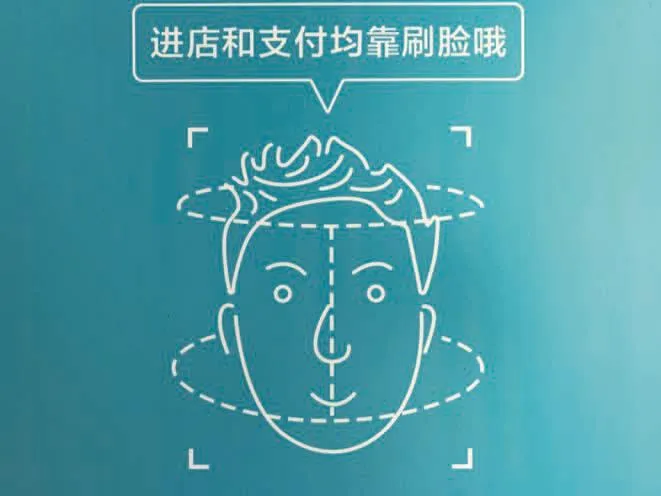NO SHOPKEEPERS IN STORE
Text by Jeff Photos by CFP Translation by Hu Nan
NO SHOPKEEPERS IN STORE
Text by Jeff Photos by CFP Translation by Hu Nan
Seventeen years after people celebrated the dawn of the 21st century, traditional retail is still struggling to win back its customers, those who have grown up in an online environment.
Although a number of online retailers seized the chance and made their money, they realise the era of pure e-commerce will soon pass as competition is becoming increasingly fi erce.
To cope with the approaching “new retail era”,traditional and online retailers are both targeting the“smart store” business. And most recently, the top players are all putting self-service stores on their agendas.
The U.S.-based e-commerce giant, AMAZON, took a big move at the end of 2016, announcing their upcoming offl ine shop, Amazon Go. Instead of lining up for the cashiers, customers of the Amazon Go are just supposed to scan their phones and take away what they need. However, AMAZON has delayed the launch of this project, which was originally scheduled for July this year, and continues to keep costumers waiting because of the technical problems.
The one that started this business earlier (though not the earliest) is Alibaba's TAO Coffee. Ma Yun,founder of Alibaba, announced this self-service coffee shop and put it to test in Hangzhou during the Taobao Maker Festival on July 8th. Soon, TAO Coffee had been expanded to most big cities in China such as Xi'an.
Even before TAO Coffee, the fi rst self-service supermarket “Bingo Box” kicked off in Shanghai on July 1st, though it was forced to stop the next day due to the failure of temperature control. On July 2nd, a chain supermarket group also declared to start their self-service counter in Shenzhen…And while the author was writing this article, another self-service supermarket was offi cially launched in Chengdu, showing the game players' ambition in this fi eld.

超市,无人看守
时间已经走到了21世纪的第17个年头,传统零售业的苦日子还没有到头。如何把那些逐渐习惯于躺在沙发里,拿着手机在电商平台上点点戳戳大把挥洒金钱的客户,拉回到街上、吸引到自己的店铺里来,仍然是摆在世界各大老牌零售企业面前的最大难题。
而对于那些喝到了“头啖汤”狠狠赚过一票的电商大佬们来说,惨烈的竞争也让他们意识到,纯电商的时代即将过去。
面对迫在眉睫的“新零售”时代,无论是老字号还是新大佬,都不约而同地打起了“智慧商铺”的主意。这一次,被大佬们推上风口试水的,是无人超市。
美国老牌电商巨头亚马逊去年年底放了个大招,宣布即将推出全新的线下商店 Amazon Go。这是一家无须排队结账的实体店,顾客要做的事情很简单:刷手机进店、选品、拿货,走人!不过因为还有技术问题没解决,这个原定在今年7月份就会落地的项目至今还没有进一步下文,可以说是起一大早,赶了个晚集。
赶上早集(虽然仍然不是最早)的是阿里的“淘咖啡”。马云的无人超市于7月8日正式在杭州的淘宝造物节上内测并向公众亮相,随之便开始在西安等全国多个大城市铺开。
在这之前,国内第一家无人超市“缤果盒子”于7月1日在上海开业,虽然隔天就败给了高温被迫停运,却抢在了马云的前头。7月2日,一家国内的超市连锁集团也宣布在深圳实现了自动收银……而就在笔者撰写本文的同时,又有一家无人超市正式在成都开业。真是好一派争先恐后,你追我赶的热闹局面。
BASED ON THE PREVIOUS CASES, WE SEE FOUR MAJOR BUSINESS MODELS OF THE SELF-SERVICE STORES:
从目前的实例中可以看出,目前无人零售的模式大概有四种:
The Large scale automatic vending machine. Compared to normal vending machines, they are just larger in terms of scale and product variety.
大型无人售货机,只是规模更大,商品种类更加丰富。
RFID chips. This is a non-contact automatic identifi cation technology, which is also known as electronic labelling. RFID is now a well-developed technology but its cost is still rather high. The model of “Bingo Box” belongs to this category.
采用RFID芯片。这是一种非接触式的自动识别技术,俗称“电子标签”,是一种比较成熟的技术,但存在成本比较高的缺点。“缤果盒子”就属于这个类别。

The Self-service counter in the supermarket. The case in Shenzhen I mentioned earlier belongs to this category: customers can scan and pay for their products in the self-service counters of the stores. However, this model does pose challenges to the payment checking and management. It's diffi cult to count on people's self-consciousness.For example, when a supermarket in Beijing just started its trial of the self-service counters, it found a customer took away bottles of expensive alcohols with only 10 yuan.
大型商超里的自助结算系统。深圳的例子属于这个类别:消费者选择好商品后,可以在自助收银台扫描商品自行结算。这种方案的缺陷在于难以核对和监管。如何才能保证消费者不会多拿少付呢?靠自觉是困难的,北京一家超市也曾经做过类似的尝试,结果出现有顾客扔下10块钱抱走数瓶高价酒,让人哭笑不得。


Image capture and machine learning system. From the perspective of their shopping process, AMAZON GO and TAO coffee belong to this category. According to Alibaba, their self-service stores adopt technologies including vision sensors, pressure sensors and IoT payment.
机器视觉智能识别方案。从Amazon Go和“淘咖啡”的购物流程来看,应该是属于这一类。据介绍,阿里的无人超市采用的是视觉传感器、压力传感器以及物联网支付等技术。

Besides, some “smart stores”continue to adopt the QR code technology and a model closed to traditional retailing. The author believes this is no more than a transitional category. Once the technologies used in AMAZON GO and Tao Coffee are further developed and promoted,this selling method, which needs to scan every product purchased by the customers, will no longer feed demand.
此外,也有一些“智慧商铺”沿用二维码技术,模式比较接近传统零售。笔者相信这只是一个过渡类型,因为一旦Amazon Go和“淘咖啡”所采用的技术最终成熟并开始推广,这种顾客每买一件商品就要做一个扫码动作的销售模式,将很难免遭遇被淘汰的命运。

